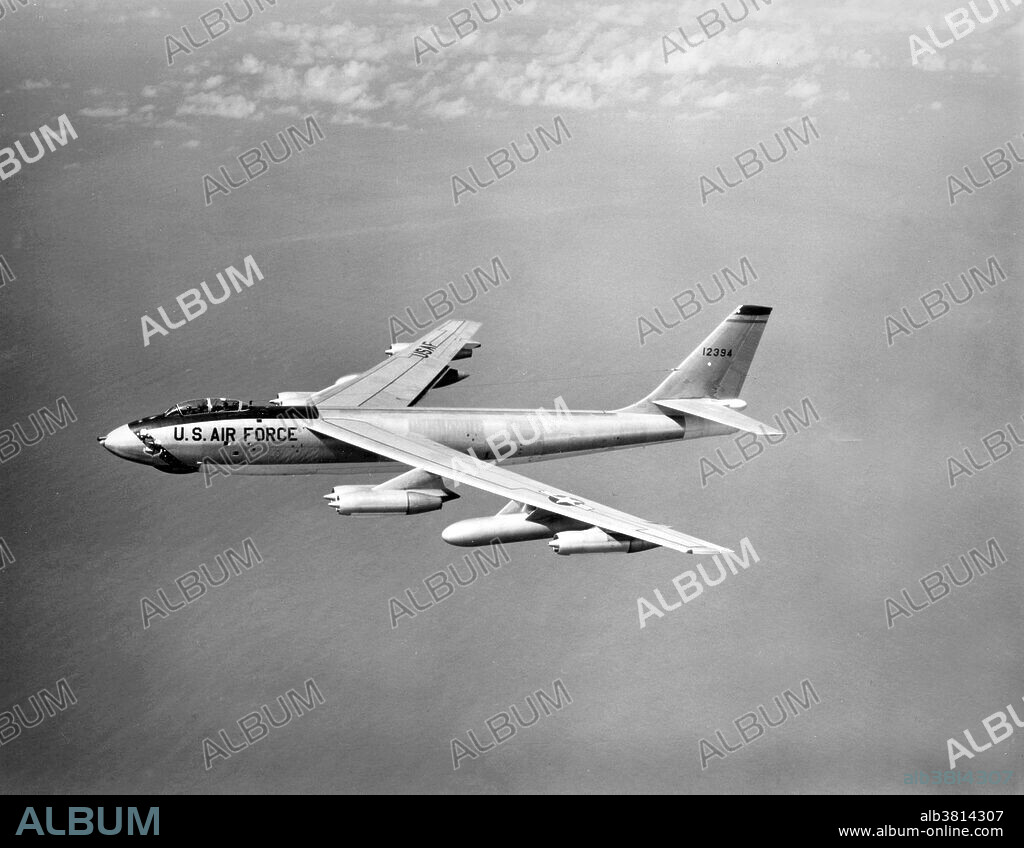alb3814307
Boeing B-47 Stratojet, Wing-Swept Bomber, 1956

|
Ajouter à une autre Lightbox |
|
Ajouter à une autre Lightbox |



Avez-vous déjà un compte? S'identifier
Vous n'avez pas de compte ? S'inscrire
Acheter cette image

Titre:
Boeing B-47 Stratojet, Wing-Swept Bomber, 1956
Légende:
Voir la traduction automatique
An overall view of a Boeing B-47 Stratojet aircraft in flight. The world's first swept-wing bomber. April 7, 1956. The swept-wing bomber has a top speed of more than 600 miles an hour. It is powered by six General Electric J-47 turbo-jet engines, has a maximum gross takeoff weight of more than 186,000 pounds and can carry more than 20,000 pounds of bombs. The Boeing B-47 Stratojet (company Model 450) was a long range, six-engine, turbojet-powered strategic bomber designed to fly at high subsonic speed and at high altitude to avoid enemy interceptor aircraft. The B-47's primary mission was to drop nuclear bombs on the Soviet Union. With its engines carried in nacelles under the swept wing, the B-47 was a major innovation in post-World War II combat jet design, and contributed to the development of modern jet airliners. The B-47 entered service with the United States Air Force's Strategic Air Command (SAC) in 1951. It never saw combat as a bomber, but was a mainstay of SAC's bomber strength during the late 1950s and early 1960s, and remained in use as a bomber until 1965. It was also adapted to a number of other missions, including photographic reconnaissance, electronic intelligence and weather reconnaissance, remaining in service as a reconnaissance aircraft until 1969 and as a testbed until 1977.
Crédit:
Album / Science Source / U.S. Air Force
Autorisations:
Modèle: Non - Propriété: Non
Questions sur les droits?
Questions sur les droits?
Taille de l'image:
4200 x 3259 px | 39.2 MB
Taille d'impression:
35.6 x 27.6 cm | 14.0 x 10.9 in (300 dpi)
Mots clés:
AERONAUTE • AÉRONAUTIQUE • AMÉRICAIN • ARMEE DE L'AIR • AVIATION • AVION • AVIONS • LUFTWAFFE • MACHINE VOLANTE • TECHNOLOGIE • TRANSPORT AERIEN • TRANSPORT AVION • VOLANT • XXE SIECLE
 Pinterest
Pinterest Twitter
Twitter Facebook
Facebook Copier le lien
Copier le lien Email
Email
